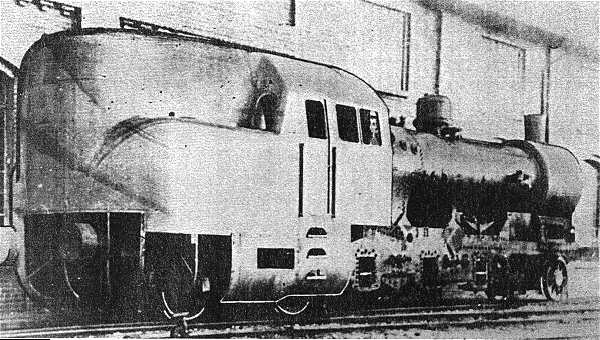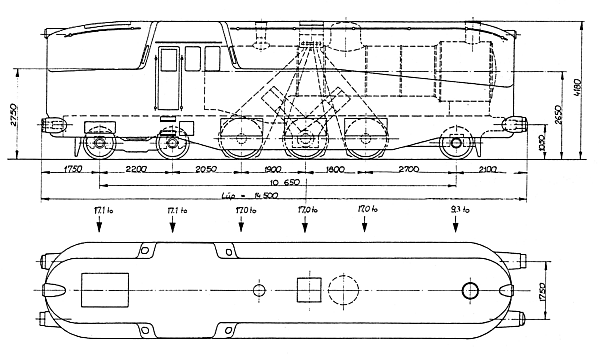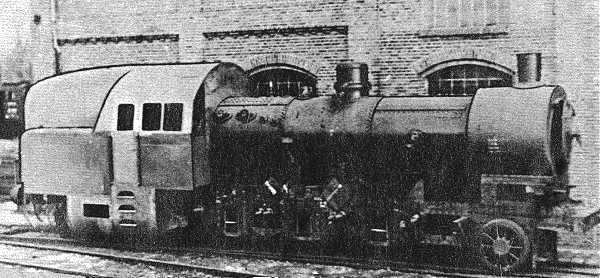The Lübeck-Büchener Eisenbahn Gesellschaft (LBE) was an important private railway company in the North of Germany, noted for adopting new and progressive ideas with enthusiasm. As early as 1936 they were running a high-speed passenger service with air-conditioned coaches. They also used double-decker coaches at an early date. The line linked Lübeck, Büchener, Kiel and Hamburg. Its initial construction was considerably complicated by the Schleswig-Holstein question, and there are few railways that can say that.
The go-ahead management of the LBE brought heavy passenger traffic, and in 1936 the Chief mechanical engineer, Paul Mauck, began planning a new design of locomotive with the firm of Henschel & Sohn. This was to be a fast streamline tank locomotive suitable for operation in either direction, with steam-motors individually powering the three driving axles. The leading and rear driving axles were to be driven by two motors on the left of the engine, with the mid axle being driven by a motor on the right. The 1-C-h2 G6 goods locomotive No 71, dating back to 1913, was selected for conversion to the new scheme.
 |
| Left: The Lübeck-Büchener steam-motor locomotive.
The fairing over the boiler is not installed, and some of the falsework at the rear is also missing.
The mounting position on the frames for the right-hand V2 engine can be seen.
Date of picture unknown.
|
During 1937, Henschel built three* of the V-2 steam-motors and subjected them to detailed testing. Trouble was experienced with the motor bodies, which were fabricated by welding. They were insufficiently rigid, leading to cracking and leaks from the pressurised lubrication system. Henschel planned therefore to use rigid castings instead. Meanwhile, in its main workshop at Lübeck, the LBE began modifying locomotive No 71. The boiler with its 12 atm (176 psi) working pressure was retained and new safety valves were fitted.
The wheels were to driven by what translates as a "Pin jointed strut drive" which I assume was some sort of shock-absorbing coupling.
* I think it was three. The German text is rather obscure here.
 |
| Left: The Lübeck-Büchener steam-motor locomotive.
This shows the full extent of the fairing, but only one of the V-2 motors. The other two were presumably on the other side.
|
 |
| Left: The Lübeck-Büchener steam-motor locomotive.
There seems to have been some rather crude retouching done on this photograph.
|
At the end of of 1937 the LBE was startled to receive the news that it was to be put under state control on 1 January 1938 and taken over by the Deutsche Reichsbahn. (DR) Given the date, they probably didn't argue. The DR at first intended that the locomotive should be completed and planned for it the new number 771001, but enthusiasm seems to have been limited and the motors were never delivered from Henschel. Invading Europe took priority and by May 1945 "only remainders of this locomotive were present". Presumably it was eventually scrapped completely.
However, not all was lost. Henschel had gained valuable experience with the steam motors, which was pressed into use in the design of the V19.1001. This streamlined locomotive was a 1-D-1 with four V2 engines, one for each axle, and very much the descendent of the LBE design.









